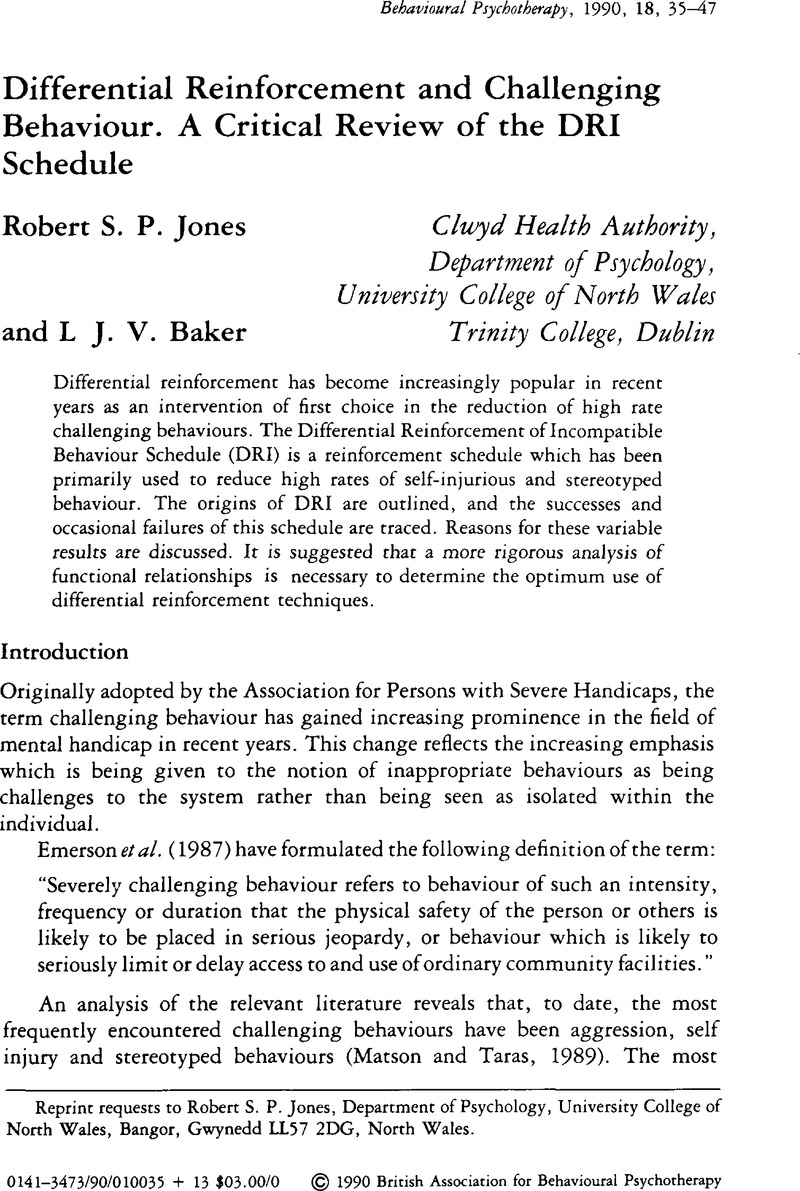Crossref Citations
This article has been cited by the following publications. This list is generated based on data provided by Crossref.
Carr, Janet
1991.
Recent Advances in Work with People with Learning Difficulties.
Behavioural Psychotherapy,
Vol. 19,
Issue. 1,
p.
109.
Emerson, Eric
1992.
SELF‐INJURIOUS BEHAVIOUR: AN OVERVIEW OF RECENT TRENDS IN EPIDEMIOLOGICAL AND BEHAVIOURAL RESEARCH.
Mental Handicap Research,
Vol. 5,
Issue. 1,
p.
49.
Withers, Paul S.
and
Ensum, Ian
1995.
Successful Treatment of Severe Self Injury Incorporating the Use of DRO, a Snoezelen Room and Orientation Cues.
British Journal of Learning Disabilities,
Vol. 23,
Issue. 4,
p.
164.
Ducharme, Joseph M
2000.
Treatment of maladaptive behavior in acquired brain injury.
Clinical Psychology Review,
Vol. 20,
Issue. 3,
p.
405.
Marcus, Ann
Sinnott, Brigit
Bradley, Stephen
and
Grey, Ian
2010.
Treatment of idiopathic toe-walking in children with autism using GaitSpot Auditory Speakers and simplified habit reversal.
Research in Autism Spectrum Disorders,
Vol. 4,
Issue. 2,
p.
260.
Chowdhury, Monali
and
Benson, Betsey A.
2011.
Use of differential reinforcement to reduce behavior problems in adults with intellectual disabilities: A methodological review.
Research in Developmental Disabilities,
Vol. 32,
Issue. 2,
p.
383.
Naoi, Nozomi
2011.
International Handbook of Autism and Pervasive Developmental Disorders.
p.
355.
Akers, Jessica
Davis, Tonya
and
Gerow, Stephanie
2020.
Handbook of Dual Diagnosis.
p.
581.






Comments
No Comments have been published for this article.